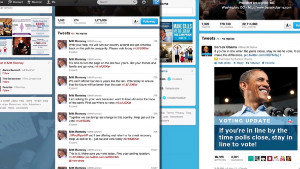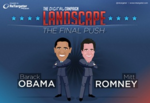
Recently 37signals published an article titled Some advice from Jeff Bezos. This wasn’t your usual advice, and I found it interesting to read and how familiar it felt as I read each next line. The post was all about “changing your mind”. The way I would describe the overall theme, is “inconsistency”. Here’s the key part of the post, paraphrased:
People who are right a lot of the time, are people who often change their mind. Consistency of thought is not a particularly positive trait.I find this fascinating, because one of the biggest challenges I’ve found as a founder for the last few years is the times when I change my mind, when have a realisation and I become inconsistent on a thought I previously had. This is amplified as your startup grows, because you have users, co-workers and stakeholders who you are in touch with who are there to witness and be affected by your inconsistency.
Success and inconsistency
If you’re part of a startup, I believe that your success might actually be defined by whether you are willing to be inconsistent. This means that actually changing your mind is not just a good trait as Jeff Bezos has mentioned, but “staying consistent” might actually be the reason your startup fails. I think this also probably applies to a much wider context than startups: I think your success might be determined by how willing you are to be inconsistent.The reason you need to let go of consistency at times, is because as a founder you need to act and move forward without having complete information for each decision:
“Entrepreneurs make fast decisions and move forward knowing that at best 70% of their decisions are going to be right. They move the ball forward every day. They are quick to spot their mistakes and correct.” - Mark SusterMaking decisions where 30% of the time you will be wrong is just the pace you need to move at to make progress with a startup. It’s a change from a normal job, where everything is laid out. It also means that when you realise which were the wrong decisions, you’re going to have to make changes - you’re going to have to be inconsistent.
When you’re early in a startup, a founder or one of the first few people to join, you will at times realise that new information from customers or a smart mentor shows that what you were working on for the last weeks or months is the wrong thing to do. The hardest thing now is to accept that and move on to other things. Letting go completely is really tough, but you can’t “keep it going on the side” and expect to succeed. You’ve just got to move on to the next thing you’ll try. If you’re a leader, it can also be hard, because you’ve got to be the one to deliver the news to someone who’s been working and had their mind immersed in something you’re about to ditch. It’s not easy at all, but these are some of the key calls to make.
The inconsistency of my startup journey
If I look back on my journey with startups to where I am today, I cringe with how many things I’ve changed my mind on, with how many things I was super passionate about for a while, and then dropped completely. It causes so many ups and downs, and you question yourself and your ability a lot, but I’ve now realised that this was exactly what I needed to do. In fact, I’ve also had this on my lessons page from the very start of my blogging journey:I don’t know whether the same lessons will apply to you, but I hope you’ll find my thoughts useful. Take what fits, and tell me what doesn’t work for you: I’m always learning. I’m pretty sure I’ll even contradict my own advice at times as I learn more.Here are some other examples from my experiences in the last few years:
The study project turned startup
Back when I was at the University of Warwick I worked on a little project, or at least it started small. It was something I did with 4 of my Computer Science classmates, and it soon took over my life and I saw it as a true startup. It was a location based startup on web and mobile, but this was back when the first phones with GPS was released, the Nokia N95 and N82. It was early days.I ended up at an event and was asked on the spot whether I wanted to join the panel. I said “sure!” and ended up speaking in front of around 50 people. I was asked “where do you see lasyou being in the next 3 years”. I said I would see it expanding from just Warwick and be global, with millions of users. I was passionate, and I wasn’t just saying it, I truly believed we could pull it off.
Fast forward a few months and I’d decided that I couldn’t continue with lasyou, and I moved on to another startup. That time it was a realisation about the dynamics of the team that meant it couldn’t work. I went back on my word which I had told everyone at that event, with such determination. And it’s exactly what I should have done.
Bootstrapping vs fundraising
One of the things I’ve probably been most inconsistent with in my journey as a startup founder is the decision about whether to raise funding or to bootstrap. It’s one of the most widely debated topics, perhaps the most interesting discussion was Jason Calacanis vs. David Heinemeier Hansson on This Week in Startups.So, I’ve been a huge believer in bootstrapping and still am, we’ve also taken funding for Buffer. With our funding announcement, someone called me out on my inconsistency in the comments on Hacker News, pointing to slides from a presentation here I advocated bootstrapping:
Joel was standing in front of me practically a year to the day in the UK advocating bootstrapping and now he’s suddenly raised $400,000So why the inconsistency? Well, the answer is quite simple. I gained new knowledge, new information. I spoke with Hiten Shah and some smart folks who had been through YCombinator, and someone who had sold his startup. I had conversations and realised that with the position we were in after 10 months of bootstrapping, raising money made sense. We could move faster by having funds to hire people.
Let’s focus on web. Let’s focus on mobile.
On the product side at Buffer, we’ve also gone back and forth many times in lots of different areas. We focused for many weeks on doing consistent updates to the Digg Digg WordPress plugin, then practically stopped working on it to focus on other areas. We created basic mobile apps, then decided we should instead fully focus on creating a great web experience. Then we decided we were wrong to drop the mobile apps, and we’re now so focused that more than half our engineering effort is in mobile. To some, it looks like we’re very indecisive. However, right now we’re in a better position than ever and there are some super exciting things on the way for Buffer users.Embrace being inconsistent
My conclusion on the topic of consistency is that it’s not required for success. There is a lot of talk about hard-nosed businessmen needing to be true to their word and never change their mind. I think a better approach is to be open to making adjustments as you learn more. That’s the smarter thing to do. It’s also much more difficult.I’m glad to see Jeff Bezos mentioning this and 37signals sharing it so openly. I was also glad to see Travis Kalanik, the CEO of “Private Driver (read: not a taxi) service” Uber, stand on stage yesterday at Startup School and announce Uber TAXI, a cheaper, more taxi-like service.
Even Zuckerberg said in an interview from the early days of Facebook that they’d never expand beyond being a college network.
Inconsistency is everywhere when you actually track successful people for long enough and notice the patterns. My failure with a previous startup I worked on for a year and a half was largely that I didn’t change the idea in a big enough way, quickly enough - that I stayed consistent. So go ahead and be inconsistent, it’s exactly what you need to be. Some don’t realise it, and you’ll drive a few people crazy by doing it. You’ll also feel weak and guilty every time you have to tell people you’re changing your mind, but you just need to get used to doing it, repeatedly.
Have you found changing your mind and your path difficult as you’ve learned more? Have you been inconsistent many times? Or do you think you could do better by being more inconsistent? I’d love to hear from you.




 Where
is the CRM? Customer relationship management (CRM) is a widely
implemented model for managing a company’s interactions with customers,
clients, and sales prospects. It involves using technology to organize,
automate, and synchronize business processes. A year ago it looked like
LinkedIn was going to add CRM to their service with the purchase of an
existing social CRM service. Nothing has come out of that yet. We’re
still waiting for LinkedIn to add this much needed feature. There is a
wide gap between the reality and the hype of CRM. LinkedIn is in an
ideal position to fill this space.
Where
is the CRM? Customer relationship management (CRM) is a widely
implemented model for managing a company’s interactions with customers,
clients, and sales prospects. It involves using technology to organize,
automate, and synchronize business processes. A year ago it looked like
LinkedIn was going to add CRM to their service with the purchase of an
existing social CRM service. Nothing has come out of that yet. We’re
still waiting for LinkedIn to add this much needed feature. There is a
wide gap between the reality and the hype of CRM. LinkedIn is in an
ideal position to fill this space.
